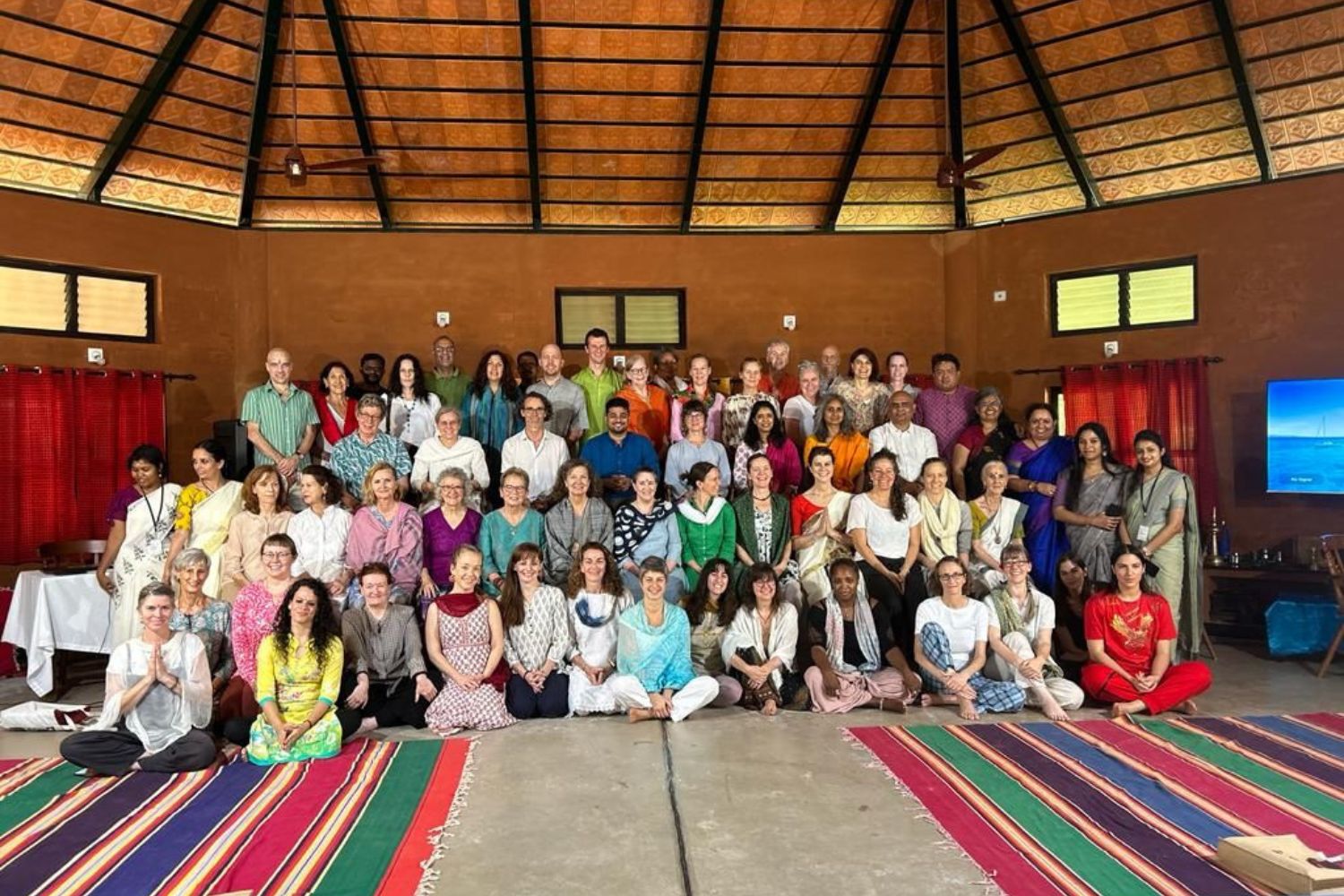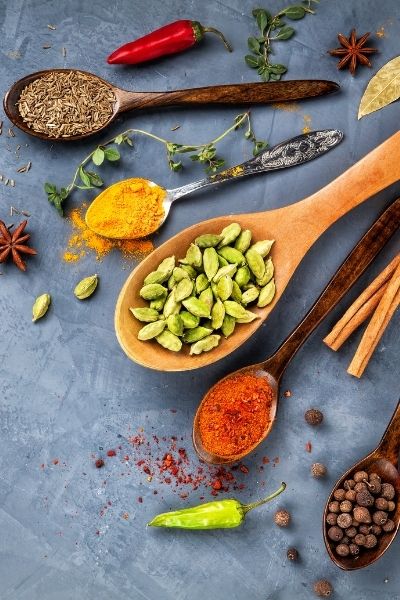64 arts (kalās)
Satsangam offers courses and conversations that refer to or explore some of the 64, “arts” (kalās) of India listed on the life map and related to Vedic knowledge systems. This page offers a brief introduction to them.
The 64, “arts” (kalās) of India include arts, handicrafts, trades and skills like, theater, painting, carpentry, geomancy, cooking, making herbal preparations, mineralogy, hair styling, etc. and fanciful, possibly endangered or extinct arts like the art of, “splashing with water,” and many more.
Whereas the teachers, texts and traditions of India inspire us to view life in a certain way, the arts (kalās), along with the sciences (vidyās), represent what many of us do.
It is impossible to thoroughly study Vedic subjects without coming across references to lists of 64 kalās or arts taught to men and women alike. While the 14 vidyās (including the four Vedas) are more uniformly agreed upon, the 64 kalās are a different story. There are varying lists of what they are, when they originated and indeed how many there are.
We find one list written by Vatsyayana (2nd to 6th century CE). Another in the 6th century CE, where it appears in Bāṇabhaṭṭa’s kādambari (a Sanskrit novel). But there are references to the kalās in the Ramayana, from far more ancient times. It is said that Lord Krishna learned all 64 kalās in 64 days, and he lived roughly 3000 years BCE.
The kalās are also said to have their roots in the vedāṅgas and upavedas (some of the 14 traditional sciences or vidyās). For example, one list from the end of part III of śukranīti–a relatively unknown text, brought to our attention by alert vaidya (Ayurvedic physician) and Satsangam guest instructor Dr. Rishi Manivannan, connects seven kalās to gandharva veda; eight to Ayurveda; five to dhanurveda and one to tantra, (not usually considered an upaveda), and lists the other 41 seemingly randomly. Regardless where the list originated, it changed over centuries to adapt to evolving skills and practices. There are even references to a modern list specific to females and one to males. Not only has the list evolved, but also may have grown–at least in some places. For example 512 kalās are listed in Yasodhara’s jayamangala (13th century CE commentary on the kāmasūtra).
It would be a mistake to think that many, or possibly any, of these lists correlate or agree. The number 64 is canonical (accepted and included in traditional texts), but the real numbers, as well as the arts, skills and crafts represented, are widely divergent. What is relevant to us is that the 64 kalās were and are valued and, reflective of the interconnectedness of Vedic knowledge systems– often relating to the upavedas or vedāṅgas.
Relevant Resources & Texts:
We hope to add conversations, resources or courses related to the 64 kalās by and by. It is a little tricky to find juicy content for them, but we intend to keep our eyes open and bring them here when we can. In the meantime, if you are interested in in studying them, here are a few rather academic places to start:
- part III of śukranīti
- Inaugural Dissertation presented to the Philosophical Faculty of the University of Bern for the Degree of Doctore of Philosophy, by. A. Venkatasubbiah
While we may not have a definitive list, this one from Monier Williams provides the following list as enumerated in the a text called the śaivatantra, and we can take this at least as an example:
- gītam =song
- vādyam– playing musical instruments
- nṛtyam-, dancing (particularly, the frantic or violent dance of shiva)
- nāṭyam-, theatrical dancing
- ālekhyam-, painting
- viśeṣaka–cchedyam-the art of painting sectarian marks on the forehead
- taṇḍula–kusuma–balivikārāḥ– preparing offerings from rice and flowers
- puṣpāstaranam– making a covering of flowers for a bed
- daśana–vasanāṅgarāgāḥ– applying preparations for cleansing the teeth, cloths and painting the body.
- maṇi–bhūmikā–karma– making the groundwork of jewels
- śayana–racanam-covering the bed
- udaka–vādyam-playing on music in water
- udaka–ghātaḥ-splashing with water
- citrā yogāḥ-applying a mixture of colors
- mālya–granthana–vikalpāḥ-designing wreaths or malas
- keśa–śekharāpīḍayojanam-setting the coronet on the head
- nepathya–yogāḥ-, dressing in the retiring room
- karṇa–pattra–bhaṅgāḥ-decorating the tragus of the ear
- su/gandha–yuktiḥ-application of aromatics
- bhūṣaṇa–yojanam-applying or setting ornaments
- a/indrajālam-juggling
- kaucumāra–yogāḥ-a kind of art
- hasta–lāghavam– slight of hand
- citraśākāpūpa–bhakṣya–vikāra–kriyā-preparing a variety of delicious foods
- pānaka–rasarāgāsava–yojanam-preparing palatable drinks and tinging draughts with red color
- sūcīvāpa–karma-needlework and weaving
- sūtra–krīḍā– playing with thread
- vīṇā–ḍama–ruka playing on lute and small drum
- prahelikā– making & solving riddles
- durvacakayogāḥ– practicing language difficult to be answered by others
- pustaka–vācanam-reciting books
- nāṭakākhyāyikā–darśanam-enacting short plays and anecdotes
- kāvya–samasyā–pūraṇam-solving enigmatic verses
- paṭṭikā–vetrabāṇa–vikalpāḥ-designing preparation of shield, cane and arrows
- tarkū–karmāṇi-spinning by spindle
- takṣaṇam-carpentry
- vāstu–vidyā– geomancy, engineering
- rūpya–ratna–parīkṣā-testing silver and jewels
- dhātu–vādaḥ– metallurgy
- maṇi–rāga–jñānam-tinging jewels
- ākara–jñānam-mineralogy
- vṛkṣāyur–veda–yogāḥ– practicing medicine or medical treatment by herbs
- meṣa–kukkuṭa–lāvaka–yuddha–vidhiḥ-knowing the mode of fighting of lambs, cocks and birds
- śuka–sārikā–pralāpanam– maintaining or knowing conversation between male and female cockatoos
- utsādanam– healing or cleansing a person with perfumes
- keśa–mārjana–kauśalam– combing/styling the hair
- akṣara–muṣṭikā–kathanam– talking with fingers (sign language?)
- dhāraṇa–mātṛkā-use of amulets
- deśa–bhāṣā–jñānam-knowing provincial dialects
- Puṣpa–śakaṭikā –nimitta–jñānam – a voice coming from heaven-, omenology/channeling
- yantra–mātṛkā– mechanics
- mlechitaka–vikalpāḥ– fabricating barbarous or foreign sophistry
- saṃvācya—art of conversation.
- mānasī kāvya–kriyā– composing verses mentally
- kriyā–vikalpāḥ– designing a literary work or a medical remedy
- chalitakayogāḥ-practicing as a builder of shrines named after him?
- abhidhāna–koṣa–cchando–jñānam-use of lexicography and meters
- vastra–gopanāni– concealment of cloths
- dyūta–viśeṣaḥ– knowing specific gambling
- ākarṣaṇa–krīḍā– playing with dice or magnet
- bālaka–krīḍanakāni-using children’s toys
- vaināyikīnāṃ vidyāṇāṃ jñānam-enforcing discipline
- vaijayikīnāṃ vidyānāṃ jñānam-gaining victory
64. There are variations here, including dhāraṇamātṛkā—concentrating on an image of the mother; vaitaliki vidya — art of awakening master with music at dawn; pratimā– memorizing verses



